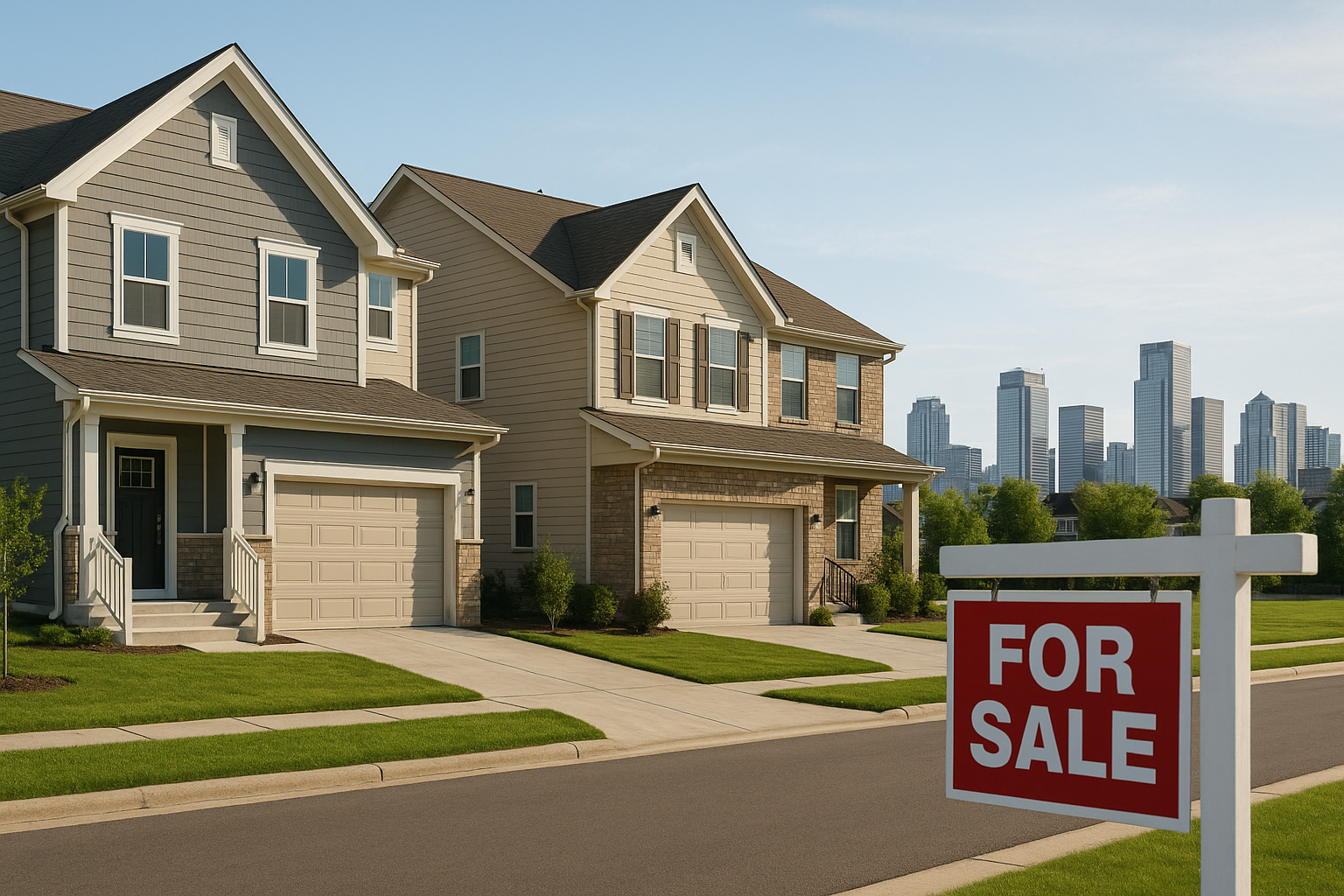U.S. Housing Market Update: Signs of Balance Amid Challenges

Housing market steadies with sales gains and more options
The U.S. housing market has been sending mixed signals. Mortgage rates remain elevated, affordability is tight, yet buyers are beginning to see more choices and slightly better deals. New data from August shows both resilience and caution, painting a picture of a market slowly finding its footing.
Home Sales Show Surprising Strength
August brought an unexpected boost in new home sales, rising 4.2% to an annual pace of 685,000 units. This marks the second month in a row of gains, suggesting that demand is far from gone despite high borrowing costs. Cities like Phoenix, Las Vegas, and Charlotte stood out with stronger activity thanks to relatively affordable suburban inventory.
At the same time, earlier months revealed the drag of mortgage rates. July sales dipped 0.6% before the rebound, a reminder that even modest changes in borrowing costs continue to shape buying decisions.
Mortgage Rates: A Relief, But Not a Rescue
Rates on 30-year mortgages recently slipped to 6.56%, their lowest point in ten months. While that offers a bit of breathing room, it is still far higher than the record lows many buyers remember. The dip has not been enough to spark a surge in demand, but it has softened the decline in pending sales. July’s pending transactions fell slightly month over month, yet they showed a small improvement compared to last year.
Inventory Expands and Choices Improve
One of the biggest shifts this year has been the return of inventory. Active listings are up more than 25% compared to last year, giving buyers options they lacked in the competitive bidding wars of the past. Builders are also keeping homes on the market longer, pushing supply of new houses to a healthier 6.5 months of inventory.
For buyers, this means less pressure and more room to negotiate. Instead of rushing to outbid competitors, many shoppers are finding time to weigh their options carefully.
Why New Homes Are More Competitive
Another development catching attention is the shrinking price premium between new and existing homes. Historically, new homes carried a significant cost advantage per square foot, but that gap has narrowed to a record low of just 7.8%. In some southern markets, new builds are now almost on par with older homes, especially when factoring in builder incentives such as temporary rate buydowns or price cuts averaging around 5%.
This trend is making brand-new houses a realistic option for more buyers. Instead of paying more for something new, buyers are finding that modern layouts and energy-efficient designs can now come with competitive pricing.
What It Means for Buyers and Sellers
For homebuyers, today’s market offers both challenges and opportunities. High mortgage rates continue to limit affordability, but growing inventory and narrowing price premiums improve the outlook. Those ready to act may find better deals than expected, especially in new construction.
For sellers, the environment demands realism. Overpricing a listing is riskier than before, as buyers now have more choices and greater leverage in negotiations.
Conclusion
The housing market is no longer racing at the fevered pace of recent years. Instead, it is slowly moving toward balance. Rising sales in August, expanded inventory, and more competitive pricing on new homes are encouraging signs, even as affordability remains strained.
Whether you are planning to buy, sell, or simply watch the market, the key takeaway is that conditions are shifting. Patience and preparation could be the difference between overpaying and landing a deal in today’s evolving landscape.
Popular Products
-
 Classic Oversized Teddy Bear
Classic Oversized Teddy Bear$23.78 -
 Gem's Ballet Natural Garnet Gemstone ...
Gem's Ballet Natural Garnet Gemstone ...$171.56$85.78 -
 Butt Lifting Body Shaper Shorts
Butt Lifting Body Shaper Shorts$95.56$47.78 -
 Slimming Waist Trainer & Thigh Trimmer
Slimming Waist Trainer & Thigh Trimmer$67.56$33.78 -
 Realistic Fake Poop Prank Toys
Realistic Fake Poop Prank Toys$99.56$49.78